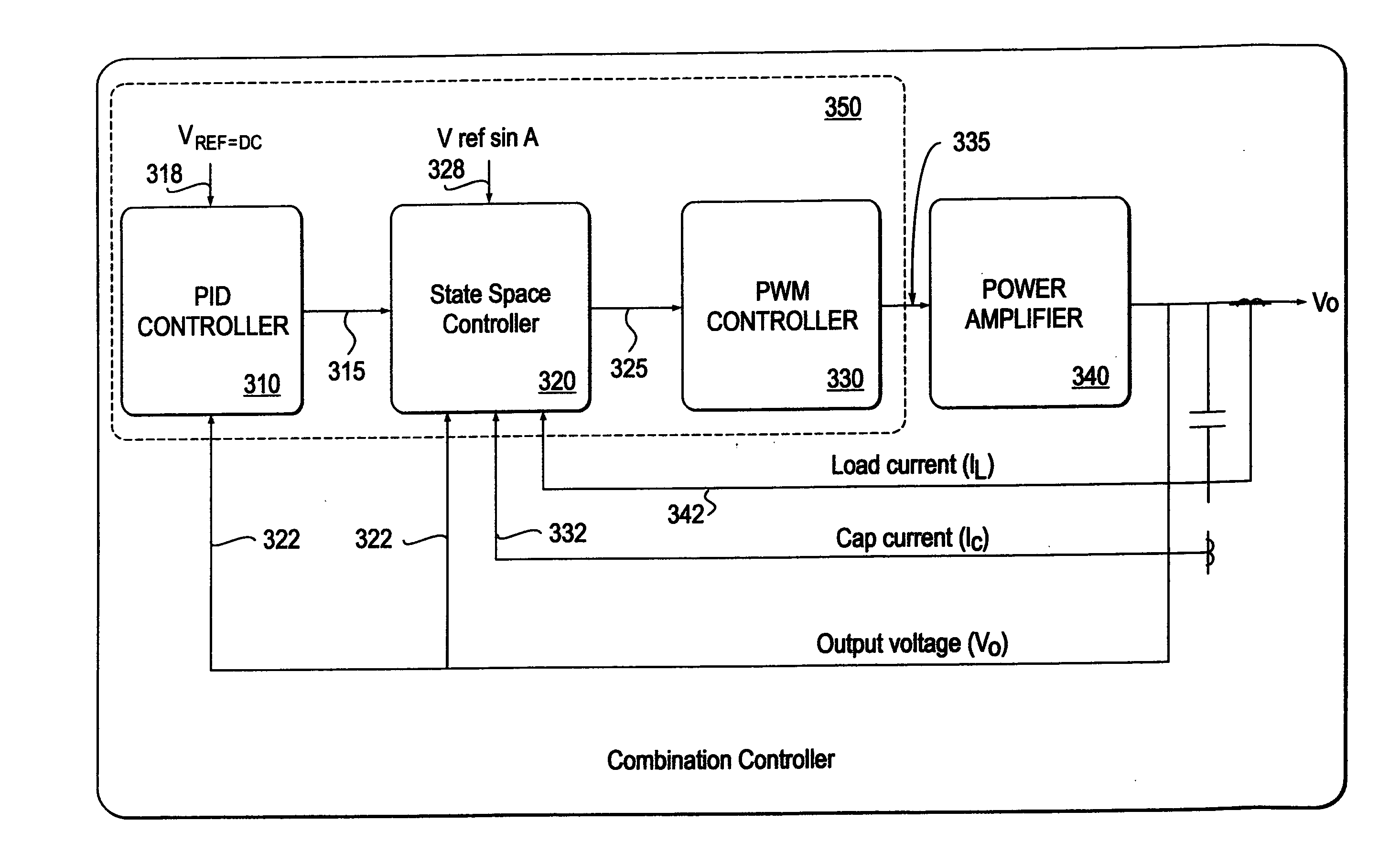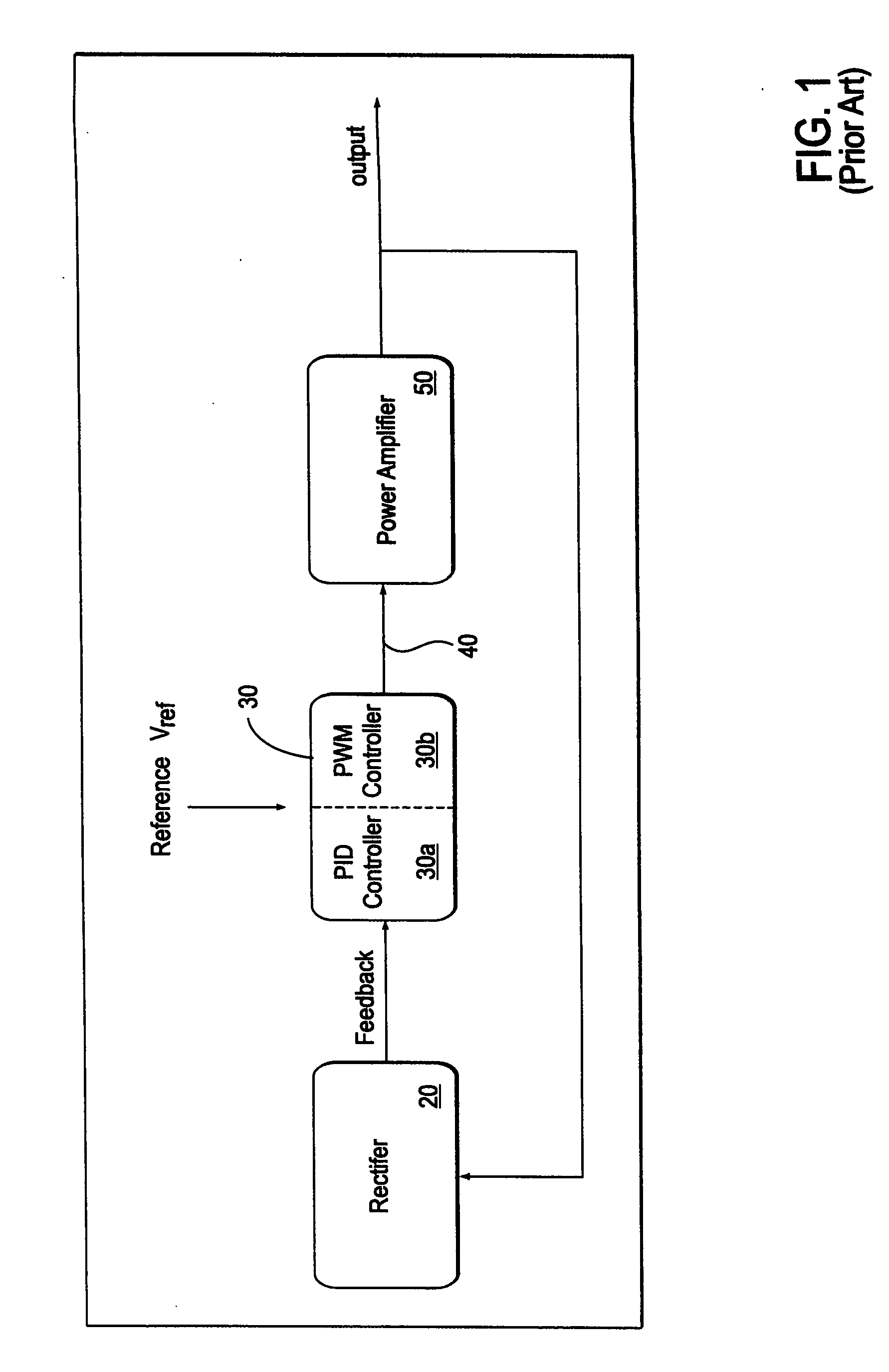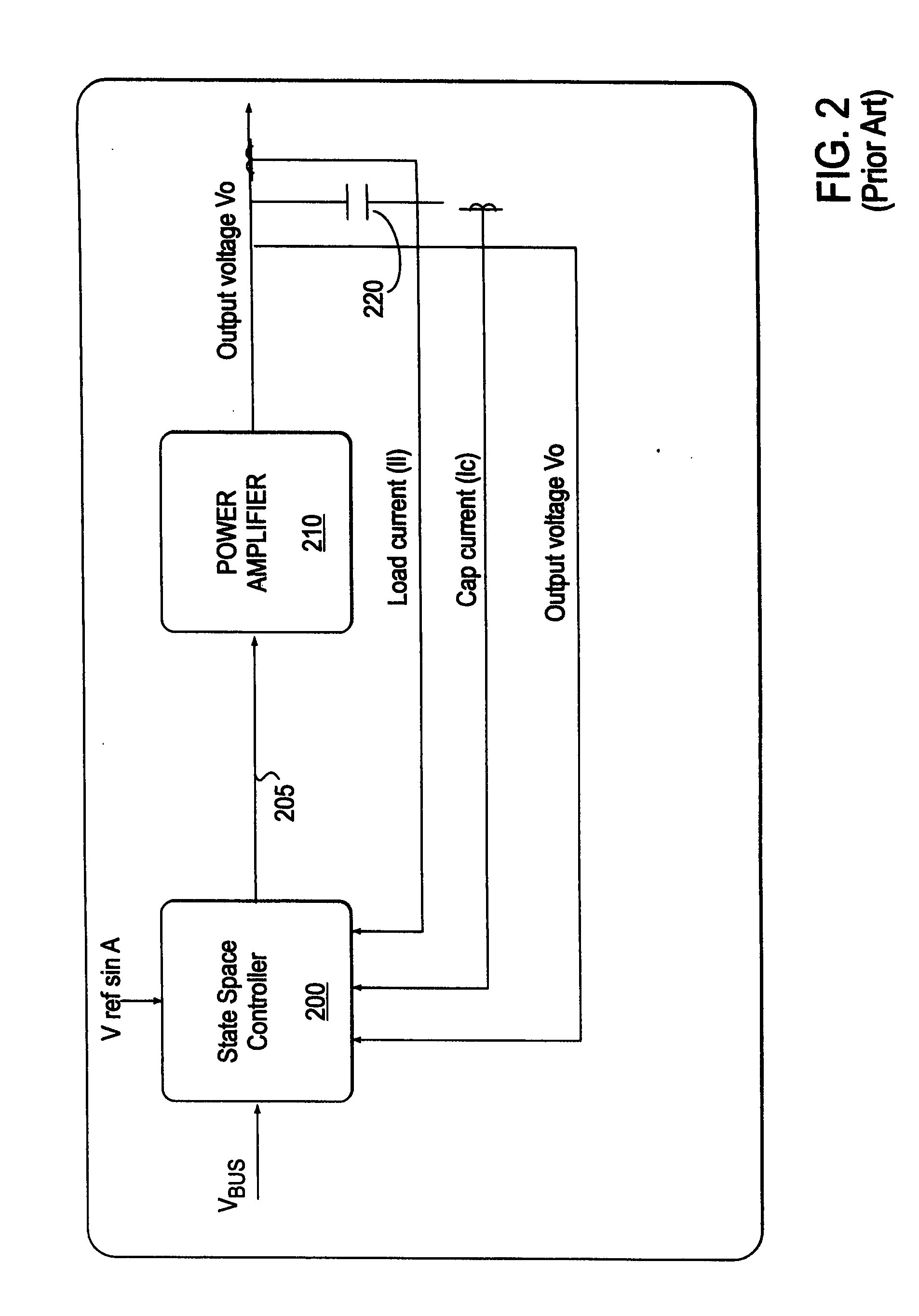Harmonics attenuator using combination feedback controller
a feedback controller and attenuator technology, applied in the direction of dynamo-electric converter control, dc-dc conversion, emergency power supply arrangement, etc., can solve the problems of affecting the performance of equipment, and affecting the life of equipment, etc., to achieve rapid transient response, low harmonic distortion, and minimal steady state error
- Summary
- Abstract
- Description
- Claims
- Application Information
AI Technical Summary
Benefits of technology
Problems solved by technology
Method used
Image
Examples
Embodiment Construction
[0026]FIG. 1 illustrates a typical single loop voltage feedback system employing what is herein called a classic controller selected from the group of proportional-integral (PI), proportional-derivative (PD), and proportional-integral-derivative (PID) controllers. A rectifier 20 receives a sinusoidal output voltage and converts the AC voltage to an average DC value. The average value of the DC voltage feedback derived from the output voltage is then received by a classic controller 30, that compares the DC average value with a reference voltage VREF. A steady state error signal associated with the average value of the output voltage is generated by the PID component 30a controller, which then combines the steady state error with a pulse width modulated signal generated by the PWM signal generator 30b portion of the classic controller 30 to yield a modified or conditioned signal 40. The conditioned signal is then supplied to a power amplifier 50 for enhancement of the conditioned sig...
PUM
 Login to View More
Login to View More Abstract
Description
Claims
Application Information
 Login to View More
Login to View More - R&D
- Intellectual Property
- Life Sciences
- Materials
- Tech Scout
- Unparalleled Data Quality
- Higher Quality Content
- 60% Fewer Hallucinations
Browse by: Latest US Patents, China's latest patents, Technical Efficacy Thesaurus, Application Domain, Technology Topic, Popular Technical Reports.
© 2025 PatSnap. All rights reserved.Legal|Privacy policy|Modern Slavery Act Transparency Statement|Sitemap|About US| Contact US: help@patsnap.com



